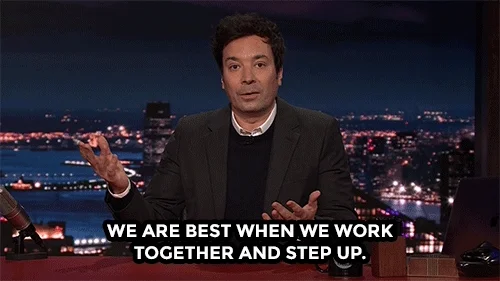Culture isn’t built in boardrooms. It’s built into everyday moments. What if every email, meeting, or conversation you have could shape a stronger, more positive workplace?
 Photo by Jud Mackrill on Unsplash
Photo by Jud Mackrill on UnsplashThink about your role in your organization. What specific actions or behaviors can you take to actively contribute to a positive corporate culture each day? 🤔
Understand Corporate Culture
What is corporate culture? The shared values, behaviors, and practices "that shape how employees interact...and work together."
Why does it matter? A strong corporate culture influences motivation, collaboration, retention, and overall performance.
What are the key elements of culture?
Values: Core principles guiding decisions and actions.
Behaviors: How employees act and interact daily.
Communication styles: The way information is shared and received.
Rituals and traditions: Regular practices that reinforce culture (e.g., team meetings, recognition programs).

There are three key ways to make a lasting, positive impact on corporate culture:
1️⃣ Model company values daily.
2️⃣ Foster open communication.
3️⃣ Build strong collaboration across teams.
Quiz
If a company has strong principles but employees rarely recognize each other’s contributions, which aspect(s) of corporate culture is weak?
1️⃣ Model Company Values Daily
Every action you take sends a message about what you and your organization stand for. Small daily behaviors can strongly reflect the company’s core values.
The ripple effect of consistent behavior: When you consistently act in line with company values, you influence colleagues, build trust, and strengthen overall culture.
Examples in action:
Punctuality: Respecting others’ time shows professionalism and reliability.
Integrity in decision-making: Choosing honesty, fairness, and transparency in daily tasks reinforces ethical standards.
Celebrating successes: Recognizing achievements creates a culture of appreciation and motivates others.
Meet these four employees.
Which one is NOT demonstrating behaviors that support a positive corporate culture?
 Alex 👋
Alex 👋
Alex is always punctual and prepared for meetings. They give honest feedback, admit mistakes openly, and regularly recognize team achievements, setting a strong example for others. Alex can sometimes dominate discussions, unintentionally leaving less room for others to share their ideas.
 Riley 👋
Riley 👋
Riley consistently meets deadlines and delivers quality work. They practice fairness and integrity in decision-making and help teammates when needed, reinforcing trust and collaboration within the team. Riley can be hesitant to speak up in meetings, which sometimes limits their influence on team decisions.
 Mark 👋
Mark 👋
Mark frequently celebrates team wins and milestones. They offer support and guidance to colleagues and communicate proactively, even if occasionally late, creating a positive and motivating environment.
 Tyler 👋
Tyler 👋
Tyler consistently finishes tasks ahead of schedule and often impresses managers with results. Tyler sometimes prioritizes personal recognition over team collaboration and may cut corners or stretch the truth to meet deadlines.
Quiz
Which employee demonstrates behaviors that LEAST align with being a positive role model in the workplace?
2️⃣ Foster Open Communication
Explore practical ways to influence corporate culture through communication.
 Photo by SEO Galaxy on Unsplash
Photo by SEO Galaxy on UnsplashActive Listening and Open Dialogue
Pay full attention, acknowledge ideas, and ask clarifying questions.
Example: In a team meeting, Saul doesn't understand a key element of his teammate Alex's proposal for a new customer experience plan. He repeats back Alex's key points and asks him to correct him if needed. He then asks questions to clarify the purpose of specific parts of the plan.
Constructive Feedback Aligned with Culture
Focus on behaviors, not personalities.
Use the company’s values as a reference when giving feedback.
Example: “I noticed in yesterday’s client call, you collaborated well with the team, which reflects our value of teamwork. One thing we can improve is…”
Transparency and Recognition
Share updates openly and recognize contributions publicly.
Example: Celebrate small wins during team huddles to reinforce positive behaviors.
Quiz
An employee frequently misses deadlines, affecting team performance. How should you give constructive feedback that supports company culture? Check all that apply:
3️⃣ Build Strong Collaboration Across Teams
Collaborate with your teams:
Collaborative teams exhibit higher retention rates and increased job satisfaction.
Employees collaborate through cross-functional projects with different departments working toward a shared goal.
Example: A cross-functional team made up of Maya, Leo, and Priya, meets weekly to develop a new software product. They simplify onboarding based on customer feedback, improving the user experience and launching on time.
Cooperate across departments:
Cross-departmental collaboration is essential for improving efficiency, encouraging innovation, and fostering a strong company culture.
Encourage regular cross-department meetings where teams share updates, challenges, and ideas to align goals and spark innovation.
Example: The marketing and product teams hold a short biweekly sync. In one meeting, marketing shares customer feedback about a confusing feature, leading the product team to simplify it. The quick change boosts user satisfaction and strengthens teamwork across departments.
Offer mentoring & peer support:
Mentoring enhances employee retention, skill development, and long-term competitiveness.
Implement a mentorship program that pairs experienced employees with newer staff to provide guidance, feedback, and career support.
Example: New hire Jordan is paired with mentor Alex, who guides him through a client report. With this support, Jordan completes the project successfully and gains confidence, demonstrating mentoring’s impact on performance and engagement.
Try these daily habits to boost morale:
Small actions matter. Saying thank you, offering help, or recognizing contributions can make a big difference every day.
Encourage employees to practice daily appreciation, such as thanking teammates or acknowledging small wins during meetings or messages.
Example: Each morning, team leader Rosa recognizes one person’s contribution. When she thanks Marco for helping a coworker, the team feels more connected, showing how small acts of appreciation boost morale.
Put Action into Practice

Scenario: The marketing and design teams are working on a new ad campaign. However, deadlines keep slipping because the two teams aren’t communicating clearly. Designers start creating visuals before marketing finalizes the messaging, leading to constant rework and frustration.

Question: What is the best solution for the teams to improve collaboration and stay on schedule?
A. Rely on detailed email threads and shared documents to communicate updates. Teams document every change and idea over email and shared drives.
B. Establish a joint project workflow with defined roles and a standing weekly sync. Teams agree on who owns each task and meet weekly to align on deliverables, reducing overlap and ensuring consistent communication.
C. Assign a single project lead from one department to streamline decisions: A marketing manager takes charge of all decisions to avoid confusion.
Quiz
Which is the best option for the teams to improve collaboration and stay on schedule?
Take Action
 Photo by Kelly Sikkema on Unsplash
Photo by Kelly Sikkema on UnsplashUse these actions to strengthen your company culture practices at work:
Your feedback matters to us.
This Byte helped me better understand the topic.

